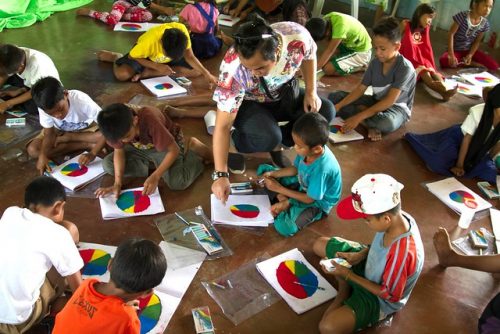Month: May 2019
How Art Therapy Is Used For Healing
May 15, 2019

Source: pixabay.com
Among the most daunting tasks in handling mental and emotional health problems is finding a suitable therapy. Art therapy is a universal type of treatment that centers on providing art materials and media to people and encouraging them to produce a ‘work of art’ from these materials. “The patient uses and makes art as a way to convey feelings at that moment or about a particular experience or situation,” says Wayne Jonas, MD, author of How Healing Works. In this way, they are utilizing art to effectively deal with their emotions and resolve their issues. “In addition to being used for treating psychological and medical conditions, art therapy has been shown to produce general benefit by reducing everyday stress and increasing self-esteem and quality of life,” Dr. Jonas added. Psychologists recommend this method since it is calming yet stimulating. It doesn’t only include creative art but also movement, like dancing.
Therapists And Who They Heal Using Art
Certified therapists administer the therapy. They have a master’s degree and have taken psychology and art courses before they are allowed to practice art therapy.
Who benefits from art therapy? Anyone who seeks help is welcome, but strictly speaking, it caters to individuals from several age groups. The right side of the brain is physiologically designated for art, and it is where visual memories are collected and saved. This means that those who have less than average language skills can use images to convey their fears and other emotions. Executives and company owners hire art therapists to help their staff handle intensely stressful tasks. Drug and alcohol addicts, those with eating disorders, children with learning abnormalities, and individuals who are suffering from chronic and debilitating pain can also benefit from art therapy.
How It Works
Art surpasses the requirement for language, which is why even young children can communicate their issues through art with the help and guidance of a therapist. It is somehow done similarly with play therapy. It utilizes various colors, strokes, shapes, and different lines and with certain techniques, it can enable patients to dig deep into their selves and attempt to draw their dreams, fears, happiness, and goals in life.
“So while art expression may bring about a sense of wellness in some sense, it’s the relational aspects that are at the center of reparation and recovery through well-targeted interventions– this is what defines and differientiates ‘art therapy’,” art therapist Cathy Malchiodi, PhD, LPCC, LPAT, ATR-BC, REAT explains. Currently, art therapists are guided by three primary strategies, which depends on their clients’ capacity to comprehend.

Source: af.mil
- Gestalt Art. The patient uses art in combination with language to unravel how his environment and the world looks like in his own perceptive. He uses this to find solutions to his problems.
- Active Imagination. The client/patient is encouraged to create art and then associate his work by thinking freely about how it means. He is allowed to express this through words or images.
- Third Hand. Here, the patient is being assisted by the therapist in creating art through images and the use of media. This type not only practices the patient’s creative mind but also fosters a harmonious working relationship with his therapist, producing a better outcome.
Other indications of art therapy are chronic pain, which is often a manifestation of patients who have psychological, physical, and social problems. The physical issues may be causing the pain, but the level of the pain and how it can be treated are subjective. Using art therapy helps patients make adjustments to her behavior and emotions to enable her to manage her pain. Art therapy is also indicated for people who have drug or alcohol abuse.
How It Works On Children
- It provides a ground for children to learn self-expression of feelings and emotions
- It promotes personal freedom and self-reliance
- It enables a child to work on her difficulties capably
- It infuses constructive strategies that help them learn self-management
- It improves a child’s hand to eye coordination, finger dexterity, and fine and gross motor skills
- It helps strengthen a child’s ability to explore, seek solutions, and be inspired by their experiences and of others’
- It empowers a child to have a voice and help others in therapy as well
Conclusion
Research and studies have proven how useful art therapy has been in helping children as well as adults to improve communication, concentration, behavioral patterns, and relationships. Art therapy has also successfully helped a lot of patients decrease their mood swings, promote relaxation, and cultivate a positive attitude.

Source: flickr.com
Our children can prosper on their capacity to communicate verbally or non-verbally freely. They are empowered when they are capable of expressing their worries, anxiety, and challenges in a non-invasive session.
“Children are more readily inclined to express themselves visually than verbally as visual language is an inherent part of our human expression and children are naturally creative and artistic,” wrote art therapist Rachela Buonincontri, BA, MC, AT, CCC. Hence, “Thoughts and feelings that may otherwise be difficult to express find a cognitive-linguistic voice through the visual arts.”
Art therapy encompasses talk therapy in that the former offers an excellent way for all people who want to heal a chance to verbally and non-verbally express their outlook in life.